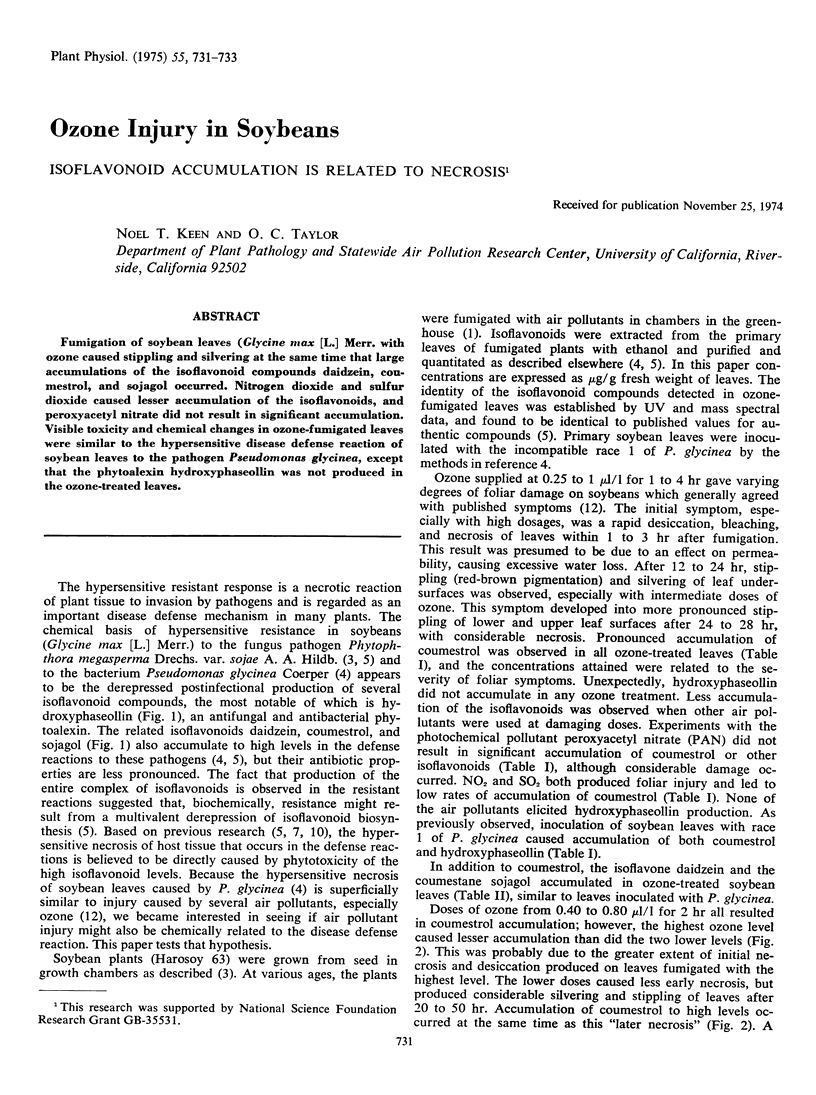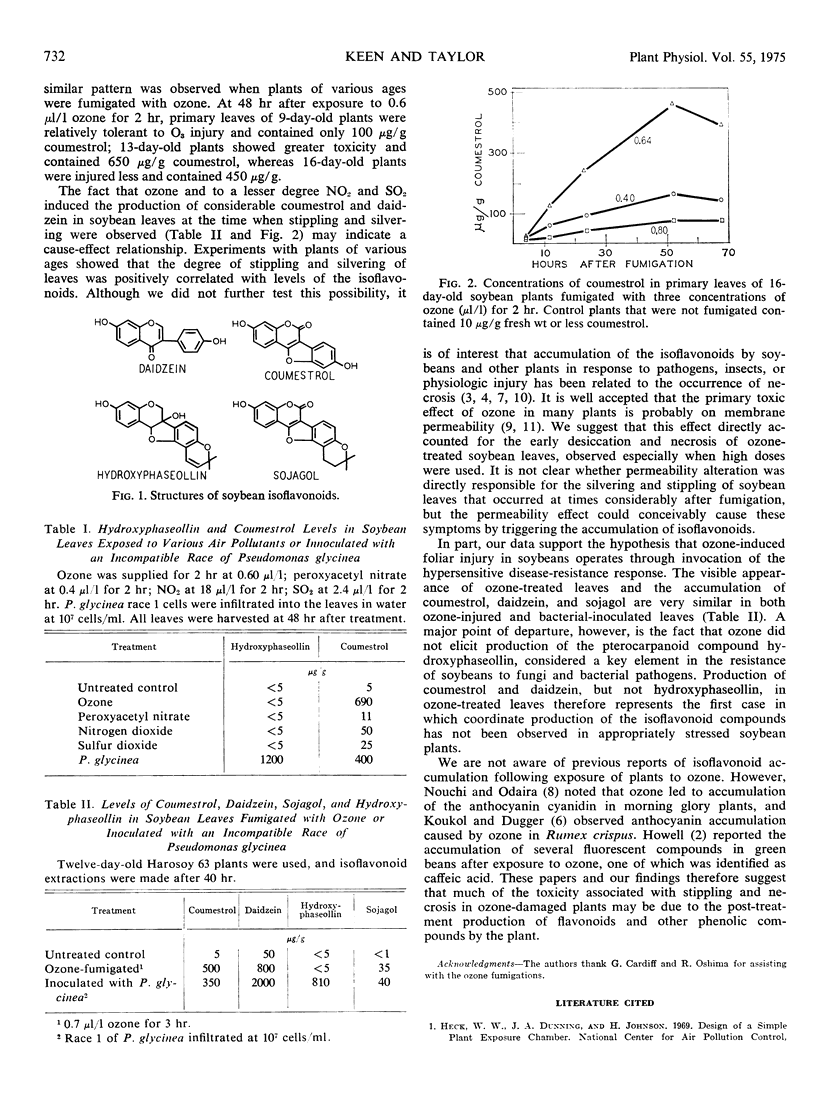Abstract
Fumigation of soybean leaves (Glycine max [L.] Merr. with ozone caused stippling and silvering at the same time that large accumulations of the isoflavonoid compounds daidzein, coumestrol, and sojagol occurred. Nitrogen dioxide and sulfur dioxide caused lesser accumulation of the isoflavonoids, and peroxyacetyl nitrate did not result in significant accumulation. Visible toxicity and chemical changes in ozone-fumigated leaves were similar to the hypersensitive disease defense reaction of soybean leaves to the pathogen Pseudomonas glycinea, except that the phytoalexin hydroxyphaseollin was not produced in the ozone-treated leaves.
Full text
PDF


Selected References
These references are in PubMed. This may not be the complete list of references from this article.
- Koukol J., Dugger W. M., Jr Anthocyanin formation as a response to ozone and smog treatment in Rumex crispus L. Plant Physiol. 1967 Jul;42(7):1023–1024. doi: 10.1104/pp.42.7.1023. [DOI] [PMC free article] [PubMed] [Google Scholar]


